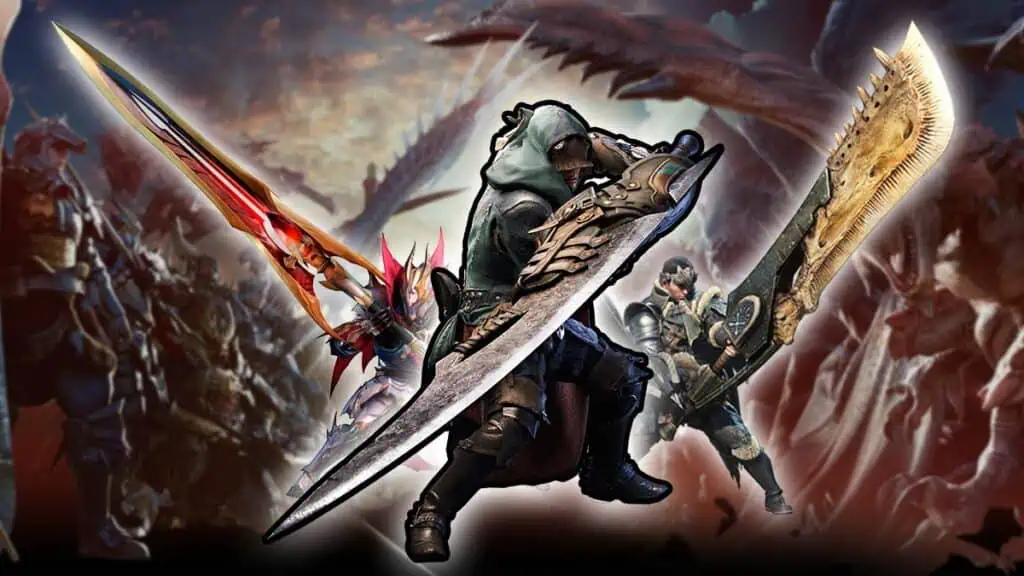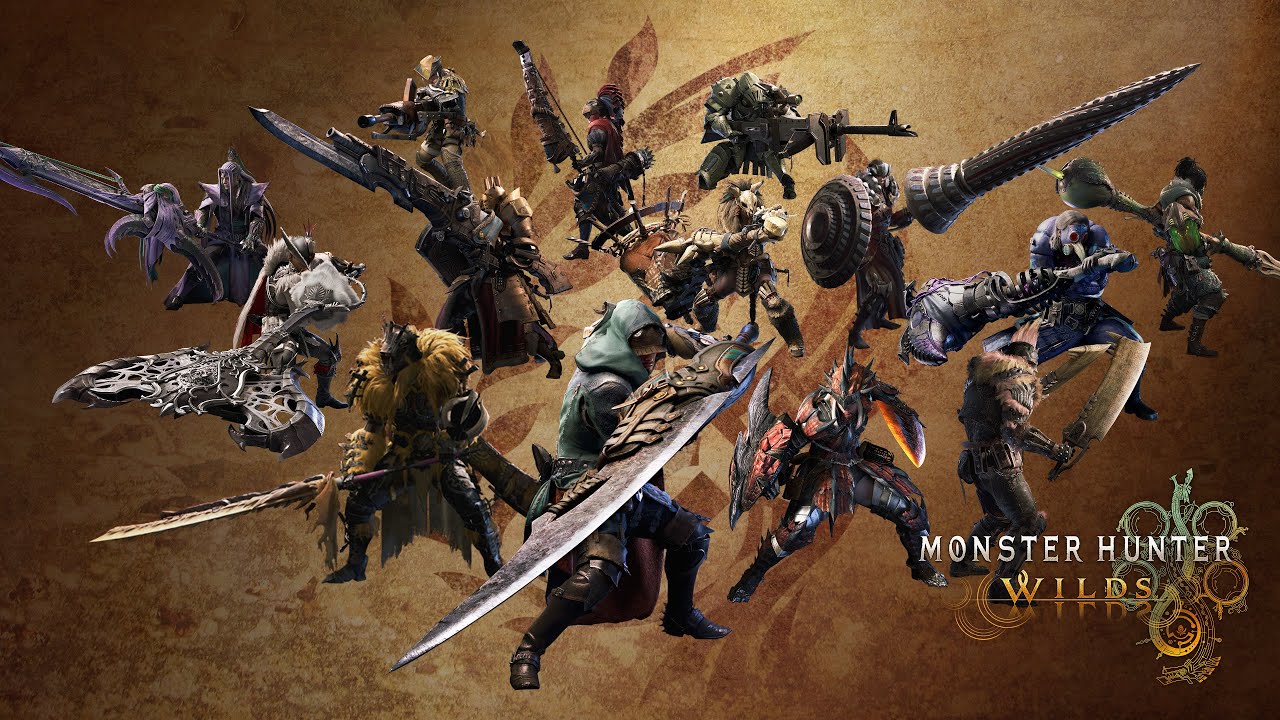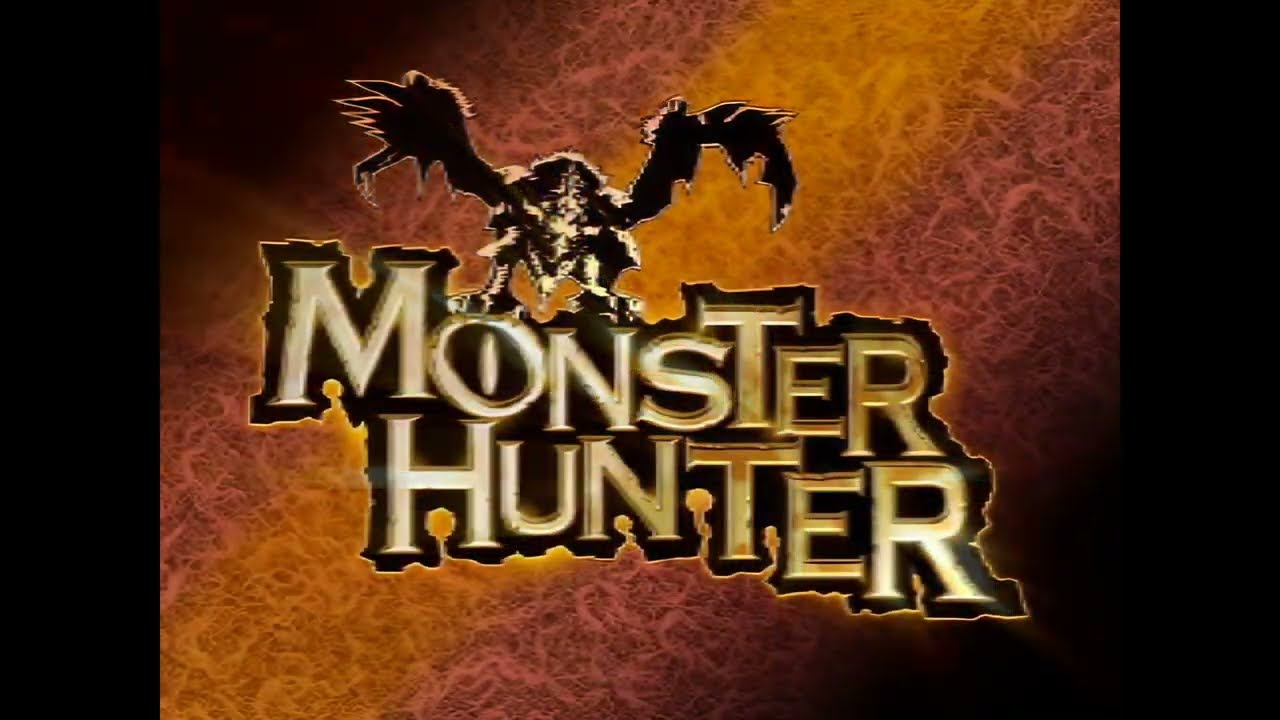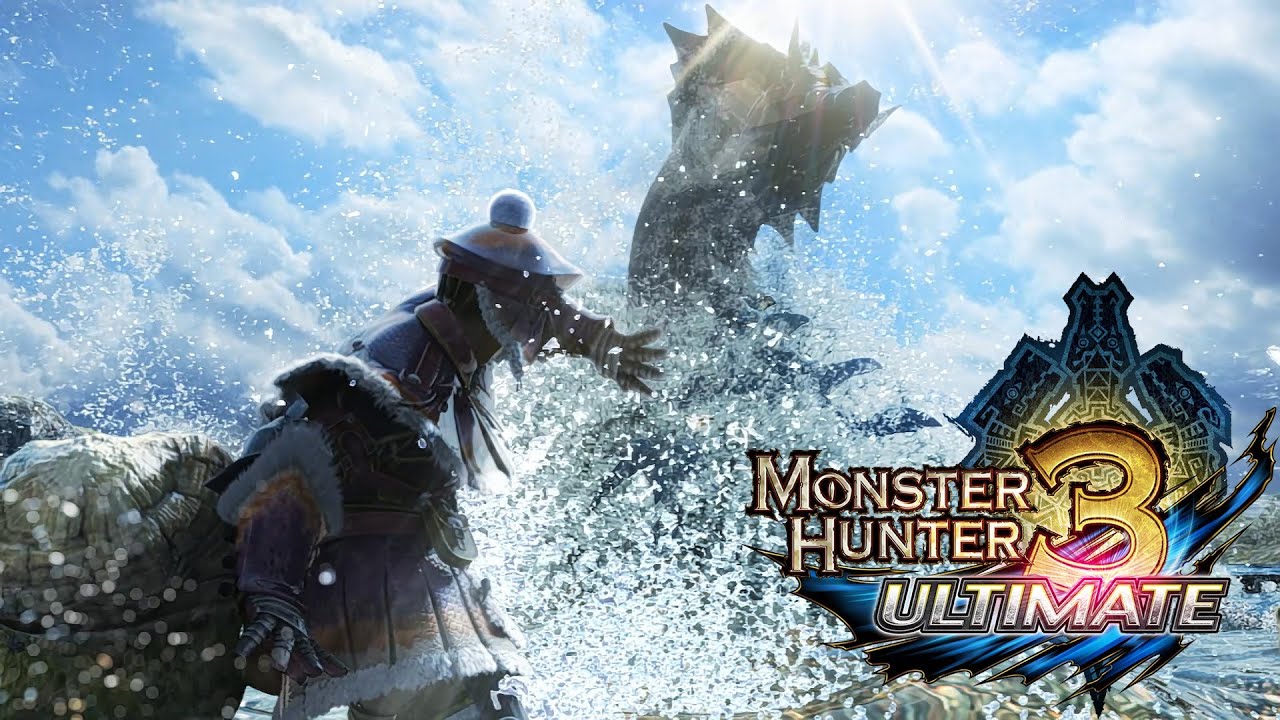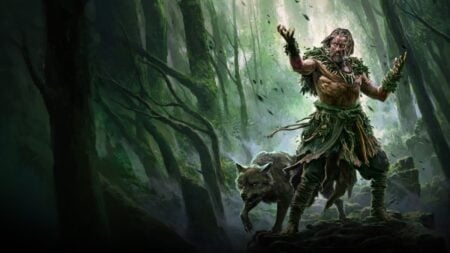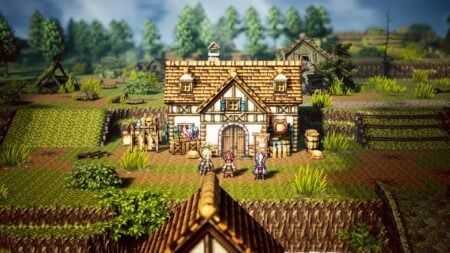Skip To...
Capcom is well-known as “the developer” of popular and high-octane action games. From Devil May Cry to Dragon’s Dogma and God Hand, the Japan-based developer has an extremely solid track record. But the one action series that took the spotlight is Monster Hunter, thanks to its unique multiplayer hunting experience. Planning to jump into the series before the latest game is launched and don’t know where to start? We have compiled a short history of Monster Hunter, its most recent game, and its release order.
[Updated on April 9: Updated the Recent Monster Hunter Games and Monster Hunter Wilds sections]
What’s The Most Recent Monster Hunter Games?
Monster Hunter Wilds is the most recently released Monster Hunter game. Launched on February 28, 2025, for PlayStation 5, Xbox Series X, and PC, it also comes with a crossplay feature for the first time ever.
Wilds joins the series legacy, debuting after the hits that were World and Rise. World was launched as a PlayStation and Xbox title in 2018, offering high-fidelity graphics and realistic environments. Meanwhile, Rise debuted as a Switch exclusive first in 2021, presenting lighter visuals but with faster-paced combat elements.
Both games have expansion pack DLCs that add a new Master Rank difficulty, more quests, and monsters, among other things.
- Iceborne, the expansion to Monster Hunter World, was released in 2019.
- Sunbreak, the expansion to Monster Hunter Rise, was released in 2022.
What are the Release Orders for Monster Hunter Games?
The series started with Monster Hunter for PS2 in 2004 and has been running strong to Sunbreak, which launched in 2022. Monster Hunter games are separated by “Generations” and each often brings huge gameplay evolution, sometimes even adding new weapons. Do note that the list below has been simplified, considering there are many titles, spin-offs, and expansions that are not available outside Japan.
First Generation Games
1. Monster Hunter
- Platform: PS2.
- Release date: September 21, 2004.
- Flagship monster: Rathalos.
Taking inspiration from one of the first console online RPGs, Phantasy Star Online, Capcom set out to develop multiplayer titles internally. The result was the first Monster Hunter game, along with Auto Modellista and Resident Evil Outbreak.
The game originally leveraged the PS2 Network Adapter, allowing multiplayer mechanics and time-limited event quests. Kirin and Fatalis Quests, for example, were only available if you were logged in to the server.
As this was the company’s first foray-slash-experiment on such gameplay, the game was infamously known as being extremely ‘janky.’ Attacks were made using thumbsticks, small monsters were relentless and could be as dangerous as a hungry Rathalos, and the enemy hitboxes were very inconsistent. Compared to recent Monster Hunter games, it was a very rough experience. Nevertheless, dedicated players realized that Capcom had struck gold with this unpolished diamond.
Later, Capcom released the updated version of the game, not unlike what it often does with Street Fighter and all its rerelease variants. Called Monster Hunter G, this standalone expansion offers expanded content, including ‘G Rank,’ the old-school name for Master Rank, and tweaked many gameplay mechanics. Unfortunately, it was made as a Japan-exclusive release, as Monster Hunter hasn’t proved to be popular overseas.
2. Monster Hunter Freedom
- Platform: PSP.
- Release date: May 23, 2006.
- Flagship monster: Azure Rathalos.
Nevertheless, all is not lost for international gamers. Seen as a deal to help push PSP sales, Capcom decided to “adapt” G into something more portable– and to be played with fewer buttons. This is also where the Farm system debuted, adding more quality-of-life features to the series.
Second Generation Monster Hunter Games
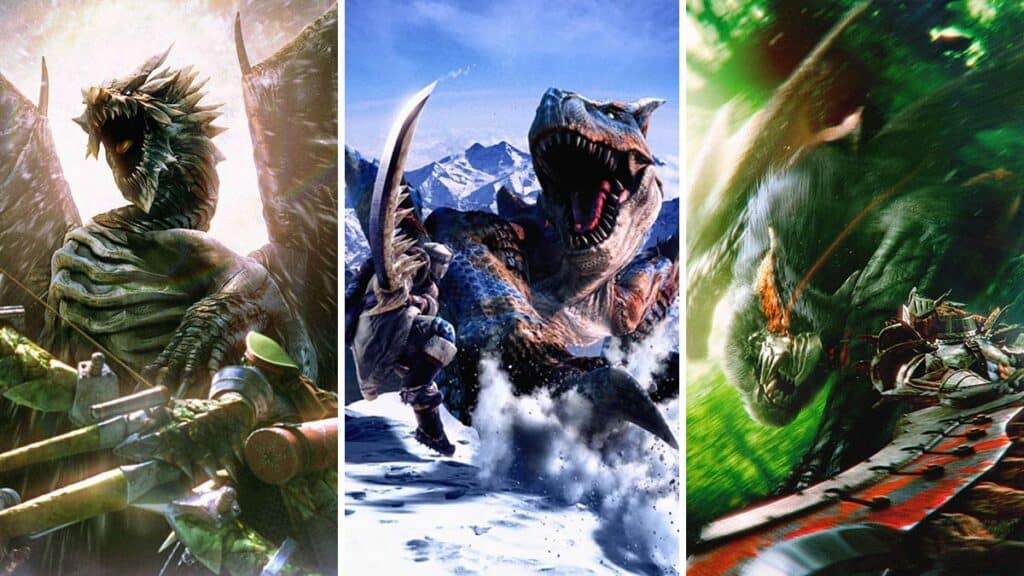
1. Monster Hunter Dos
- Platform: PS2 (Japan only).
- Release date: February 16, 2006.
- Flagship monster: Kushala Daora.
This game was considered quite revolutionary in the community since Capcom packed it with many improvements. Unfortunately, while the series has taken the land of sushi by storm, it was still a niche series in other regions. Dos was stuck in Japan, and overseas players weren’t able to play the game.
Aside from even more quality-of-life systems like pausing during an offline quest and bar minigames, it brought tons of additions. For starters, Bow, Gunlance, Hunting Horn, and Long Sword first showed up here. Decoration and equipment slots to increase your Armor Skill levels were also added here. Then it introduces a day-and-night mechanic, along with seasons, which affect what kind of monster can be hunted and which areas are accessible.
But one thing that veterans miss the most is the online ‘PvP’ mode, where Hunters can raise and fight each other’s monsters. This is also where the ‘Rajang eats Kirin’s horn to turn Super Saiyan’ lore came to be. Feeding it Kirin’s Horns will increase the lightning monkey’s power during PvP.
2. Monster Hunter Freedom 2
- Platform: PSP.
- Release date: February 16, 2006.
- Flagship monster: Tigrex.
Although the series didn’t take off on console, PSP owners worldwide are enjoying the hunting game. With that comes the portable port of Monster Hunter Dos for the international release. Many things were expanded: Farm got new features to increase productivity, maps gained ledges to help traversal, and monsters got bigger with Akantor’s appearance.
3. Monster Hunter Freedom Unite
- Platform: PSP.
- Release date: June 22, 2009.
- Flagship monster: Nargacuga.
Continuing the tradition of G Rank expansion, Freedom Unite becomes the updated rerelease of Freedom 2. This time, solo players can enjoy a taste of a multiplayer experience, thanks to Palico’s precursor, the Felyne Comrade system.
While not the most recent, Unite was considered the most ‘complete’ Monster Hunter experience back then. The game features 70 monsters and 410 quests across two generations. It was also crowned as the best-selling PSP game of its time.
Third Generation Monster Hunter Games Release Order
1. Monster Hunter Tri
- Platform: Wii.
- Release date: April 20, 2010.
- Flagship monster: Lagiacrus.
Similar to Dos, the first entry to the third-generation game revamped how players interact with monsters and the hunting ground. It presents unique underwater combat that opens a fresh 360-degree hunting environment, giving both hunters and monsters new movesets at the same time. Tri is also where the first transforming weapon, Switch Axe, made its debut and combined Light and Heavy Bowgun into one highly customizable Medium Bowgun.
The changes came with one huge drawback, however; Tri removed the Bow, Gunlance, Hunting Horn, and Dual Swords for unknown reasons.
The third-generation game was actually planned to be released for the PS3. But in 2007, Capcom announced it changed course and chose to launch it on a Nintendo console for the first time, the Wii, instead. According to the rumor, the switch was caused by Nintendo offering a lucrative deal that Capcom couldn’t refuse. Considering Monster Hunter is as ‘popular as Pokemon and Yu-Gi-Oh‘ in Japan, the company might see the need for more third-party support. This is done to strengthen the console’s line-up for young adult audiences since Wii was seen as a ‘family-friendly console.’
2. Monster Hunter Portable 3rd
- Platform: PSP (Japan only).
- Release date: December 1, 2010.
- Flagship monster: Zinogre.
The last hurrah for PlayStation and PSP fans while Capcom is buddying up to Nintendo for the foreseeable future. On one hand, the portable version of Tri completely removed the Medium Bowgun, pitch-black caves, and mixed-response underwater combat. On the other hand, it brought back all 12 weapons as well as added Misty Peaks and Zinogre, which quickly became a fan favorite. A year later, Portable 3rd received an ‘HD remaster’ version for the PS3.
3. Monster Hunter 3 Ultimate
- Platform: 3DS and WiiU.
- Release date: March 19, 2013.
- Flagship monster: Brachydios.
The G Rank update brought the best of both its predecessors. Underwater combat, all 12 weapon types, Zinogre, you name it. Not to mention that 3DS and Wii U players can connect and play together locally. Sure, some die-hard Tri fans will swear by their game, no thanks to changes to visual qualities and the online hub. However, we still consider 3U to be the best starting point if you want to try your hands at swimming while hunting a giant monster.
Fourth Generation Monster Hunter Games Release Order

1. Monster Hunter 4
- Platform: 3DS (Japan only).
- Release date: September 14, 2013.
- Flagship monster: Gore Magala.
Underwater combat did not make a return, but Capcom had another idea to improve the game’s verticality. This is the first time Hunters can dynamically scale up walls and mount monsters to deal extra damage. Charge Blade and Insect Glaive debuted in this entry, complementing the radical changes to the gameplay.
Interestingly, gameplay isn’t the only factor that got a makeover. Based on overseas players’ reactions during public demos, the Monster Hunter developer team decided to try making the series more cinematic. This time around, the story centers around a caravan troupe that searches for hidden treasures. Along the way, the team meets and helps out people in need, including Aiden the Ace Hunter and his mission to research the Frenzy Virus.
2. Monster Hunter 4 Ultimate
- Platform: 3DS.
- Release date: February 13, 2015.
- Flagship monster: Seregios.
The Western fanbase lost another entry with the base Monster Hunter 4 being a Japan-exclusive release. Thankfully, Capcom localized and launched the G Rank update for the global market. The game features 98 monsters — 23 small and 75 large — with Carapaceon types making a return after the second generation.
3. Monster Hunter Generations
- Platform: 3DS.
- Release date: November 28, 2015.
- Flagship monster: Astalos, Gammoth, Mizutsune, Glavenus.
Although still considered an entry in the fourth generation, Generations brought a lot of stuff to the Canteen table. It brought back not just returning monsters but also villages and hunting areas from previous titles.
To mix things up even further, the main gimmick of this release is the Hunter Arts and Styles mechanic, where players can unleash powerful special moves and mix-and-match combos. It’s practically the predecessor to Rise‘s Silkbind Attacks and Switch Skills. It’s fair to say that this game is the swan song for ‘classic’ gameplay and the 3DS Monster Hunter era in general.
4. Monster Hunter Generations Ultimate
- Platform: 3DS and Switch.
- Release date: November 28, 2015.
- Flagship monster: Valstrax.
The G Rank expansion made Generations Ultimate the most jam-packed Monster Hunter entry so far. It features 24 hunting areas, 6 hubs not including Gathering Hall, and 129 monsters in total. The hunt never ends once you boot up this game.
Fifth Generation Release Order

1. Monster Hunter World
- Platform: PlayStation 4, Xbox One, and PC.
- Release date: January 26, 2018.
- Flagship monster: Nergigante.
The fifth generation’s first entry marks a huge leap in graphical fidelity for the whole Monster Hunter franchise. Focusing on “breathing, living wildlife,” the team worked hard to design the game’s environment to look as realistic and open as possible. Gone are the loading screens between zones. Monsters are often seen interacting with their surroundings, and predators will initiate Turf Wars with each other over territorial disputes. The hunting mechanics have also been overhauled, players can use Slingers to cause environmental damage, extend combos, or even stun a monster.
2. Monster Hunter World: Iceborne
- Platform: PlayStation 4, Xbox One, and PC.
- Release date: September 6, 2019.
- Flagship monster: Velkhana.
The expansive world of World got even bigger with the DLC’s Hoarfrost Reach and the free-for-all hunting ground Guiding Lands. Hunters were given additional movesets leveraging the Slinger mechanic, upgrading each 14 weapon’s moves with more attacks. With the Iceborne expansion, Capcom also changed the ‘G Rank’ difficulty name to ‘Master Rank.’
3. Monster Hunter Rise
- Platform: Nintendo Switch, PC, PlayStation 4, PlayStation 5, Xbox One, and Xbox Series X.
- Release date: November 28, 2015.
- Flagship monster: Magnamalo.
Despite being part of the same generation, Rise took a different approach in expanding the core Monster Hunter gameplay. Honing in on Switch’s more limited hardware capabilities, the team sets out to make the most combat-oriented entry to date. Players can use grappling hook-like Wirebugs to quickly traverse large distances, scale walls, launch devastating Silkbind Attacks, or even control monsters through Wyvern Riding. Your loyal Palico gained another hunting friend as well, in the form of Palamute the hunting dog.
4. Monster Hunter Rise: Sunbreak
- Platform: Nintendo Switch, PC, PlayStation 4, PlayStation 5, Xbox One, and Xbox Series X
- Release date: November 28, 2015.
- Flagship monster: Malzeno.
Just like how Iceborne improves on the base game’s hunting areas, Sunbreak brings fresh additions to the series’ combat. You can now switch between two sets of moves in an instant and bring NPC Followers into single-player hunts. The Followers feature first debuted in the Monster Hunter Frontier MMO spin-off, however.
Sixth Generation Entry, The Most Recent Monster Hunter Games

1. Monster Hunter Wilds
- Platform: PlayStation 5, Xbox Series X, and PC.
- Release date: February 28, 2025.
- Flagship monster: Arkveld.
The latest title in the Monster Hunter series is called Wilds. The game is now set in open-world hunting grounds with dynamic weather. Followers and Slinger mechanics made a comeback to increase the depth of both combat and player interaction.
All weapons’ combos will be given huge changes, along with the Focus Mode system that lets players deal even more damage at the monsters’ wounds or weak points. Shielded weapons can perform Power Clash cinematic counters, while heavy weapons come with the Offset Attack parry moves. This time, Hunters can also bring 2 weapons into the hunt, carried by the Seikret mount.
With crossplay and slick gameplay upgrades, our Julio La Pine boldly dubs it the ultimate monster-hunting experience.
Do You Need to Play the Game Chronologically or In Release Order?

We actually do not recommend playing all Monster Hunter games in release order. While newer releases will reference previous entries, almost all of them have self-contained stories. Even the entries with the most heavy-handed references, like World and Wilds, can still be enjoyed without a knowledge of one or the other.
The gameplay also massively improved between newer generations, removing obtuse control while adding new movesets and quality-of-life mechanics. Playing Monster Hunter 1 after Wilds can feel like playing a new game entirely, for example.
Playing all of them back-to-back will just burn you out, and we suggest you pick the entry that interests you the most. Especially if you have friends that play that particular game, as Monster Hunter is a dish best served cooperative.

